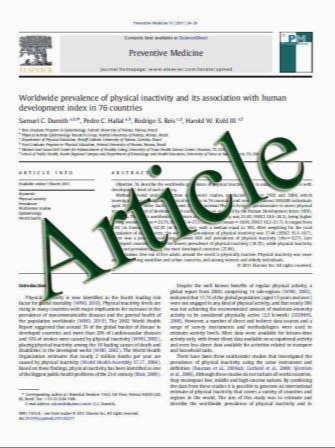Low bone mineral density is associated with increased risk for myocardial infarction in men and women
- نوع فایل : کتاب
- زبان : انگلیسی
- مؤلف : P. Wiklund & A. Nordstrِm & J.-H. Jansson & L. Weinehall & P. Nordstrِm
- چاپ و سال / کشور: 2011
Description
Summary The association between bone mineral density (BMD) and myocardial infarction (MI) was investigated in 6,872 men and women. For both men and women, lower BMD in the femoral neck and hip was associated with increased risk of MI largely independent of smoking, hypertension, hypertriglyceridemia, and diabetes. Introduction The relationship between BMD and cardiovascular disease is not completely understood. The objective of this prospective study was to investigate the risk of MI in relation to bone mineral density and to determine if cardiovascular risk factors could explain this association. Methods Dual energy X-ray absorptiometry was performed in 5,490 women and 1,382 men to determine total hip and femoral neck BMD (in grams per square centimeters) and estimate femoral neck volumetric BMD (in grams per cubic centimeters). During a mean follow-up time of 5.7 years, 117 women and 79 men suffered an initial MI. Results After adjustment for age and BMI, lower BMD of the femoral neck and total hip was associated with increased risk of MI for both women [hazard ratio (HR)= 1.33, 95% confidence interval (CI) 1.08–1.66 per standard deviation (SD) decrease in femoral neck BMD] and men (HR=1.74, 95% CI 1.34–2.28 per SD decrease in total hip BMD). After additional adjustment for smoking, hypertension, hypertriglyceridemia, and diabetes, the associations were slightly attenuated in men (HR=1.42–1.88 in the age and BMI-adjusted model versus 1.33–1.77 in the fully adjusted model) while similar attenuations were seen in women (HR=1.06–1.25 versus 1.05–1.22). Conclusion Lower BMD was associated with an increase in MI risk for both men and women. Women had consistently lower HRs compared to men in all models. Adjusting for smoking, hypertension, hypertriglyceridemia, and diabetes did not distinctively weaken these associations.
Osteoporos Int DOI 10.1007/s00198-011-1631-0 Received: 14 February 2011 / Accepted: 28 March 2011


